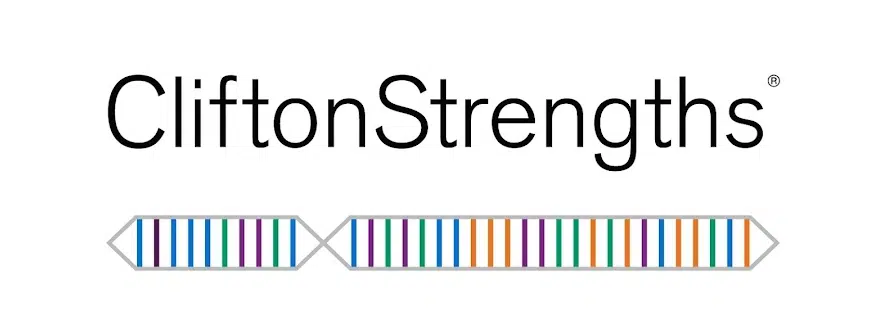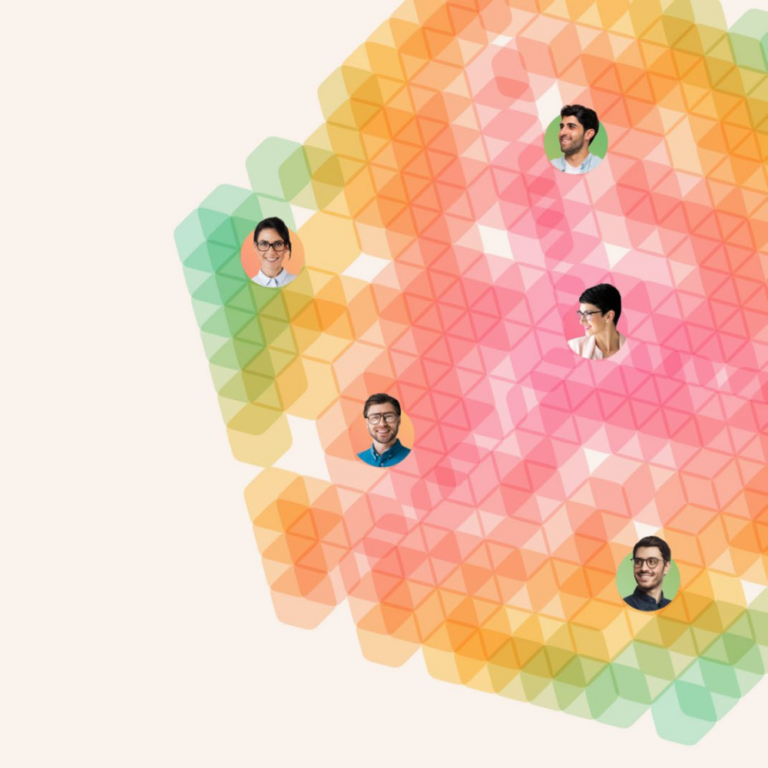Knowledge Kernel
Strengths
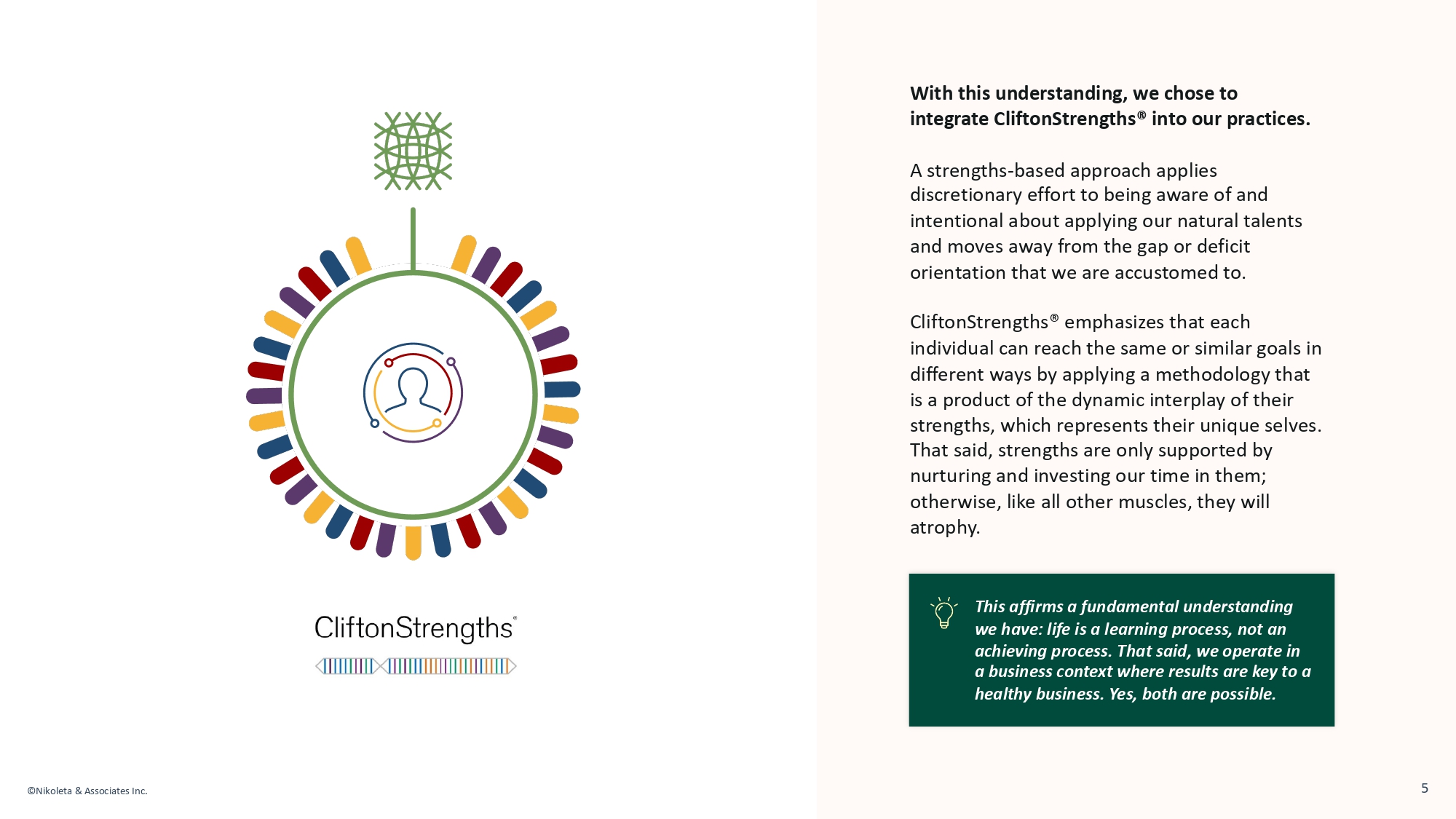

Design and Shaping Considerations That Leaders Can Leverage When Implementing Gallup’s CliftonStrengths®
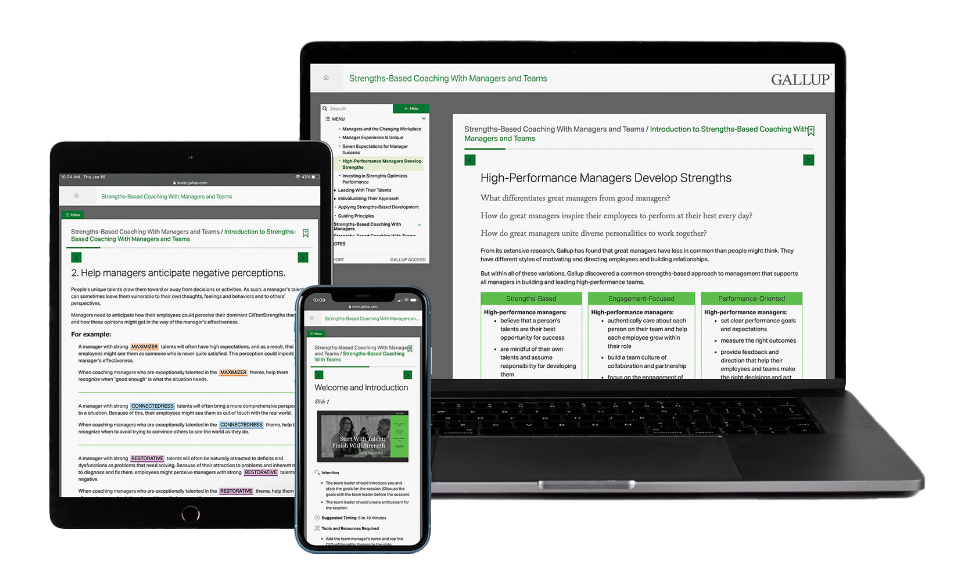
Strengths
We are often faced with the question of where and how to allocate our development efforts from financial, strategic, and time perspectives. We find that our understanding and placement of these efforts is both contextual and reflective of individual and collective worldviews.
Adopting a strengths-based approach supports a shift from a deficit frame that aims to close gaps, to a focus on being aware of and intentional about applying our natural talents, as well as our ways of thinking, behaving, and acting. Understanding our key talents and nurturing them can help us develop these talents into exceptional strengths, which we playfully refer to as our signature superpowers.
At Nikoleta & Associates, uplifting the human experience in business is a core premise.
While no one will debate or even challenge this conceptually, in the pursuit of profit, successful IPOs, and the list goes on, we often find that human beings are a means to an end. As we often say, there is no business without human beings. In a business context, can we engage one another in a way that uplifts? We spend time experimenting, reflecting, and finding new ways every day to realize this.
Self-awareness and priorities.
Self-awareness, often rooted in emotional awareness, is a thread for us in our daily lives. We strive to vigilantly and actively learn from our experiences, both pleasant and unpleasant, as a way to enact this. Priorities are also often top of mind, especially when the learning process by nature takes time and needs to be factored into our daily get-it-done flow.
With this understanding, we chose to integrate CliftonStrengths® into our practices.
A strengths-based approach applies discretionary effort to being aware of and intentional about applying our natural talents, moving away from the gap or deficit orientation that we are accustomed to.
CliftonStrengths® emphasizes that each individual can reach the same or similar goals in different ways by applying a methodology that is a product of the dynamic interplay of their strengths, representing their unique selves. That said, strengths are only supported by nurturing and investing our time in them; otherwise, like all other muscles, they will atrophy.
This affirms a fundamental understanding we have: life is a learning process, not an achieving process. That said, we operate in a business context where results are key to a healthy business. Yes, both are possible.
Changing the frame
A strengths-based approach asserts that individuals want to develop and focus on their innate talents, which can become exceptional strengths (“signature superpowers”). The more we harness and focus on our natural talents, the greater the impact of our strengths.
What is a strengths-based development approach?
Gallup, a pioneer of the strengths-based development approach, found that individuals who focus on nurturing their strengths and leveraging them in their everyday tasks are six times more likely to be engaged in their roles and three times more likely to report having an excellent quality of life.
Not Another Label or Box.
This approach intends to promote an understanding of diverse strengths without labeling or restricting individuals. Avoiding boxing ourselves in remains a challenge to be actively addressed. The approach provides clarity on the unique mix of talents, recognizing that not having a top strength does not prevent the performance of a task.
Powered by You.
By directing our attention to what our mix is, a strengths-based approach allows us to name that mix. With its holistic focus on diversity as a strength, implementing this approach crystallizes a picture for a team and can be a starting point for conversations without making one better than the other.
Not Only Five Things You Do Well.
A strengths-based approach doesn’t limit one’s abilities or imply optimal skill usage. It emphasizes unique talents for focus, recognizing that individuals achieve goals differently using their top strengths. This approach also values diversity and highlights the importance of collaboration for collective success.
We do not Generally Recognize Our Strengths.
Individuals often overlook their strengths in environments that focus on improvement, thereby leading to a focus on weaknesses. By investing in innate talents, we can develop expertise in areas of interest, with benefits both personally and professionally.
Design Shaping Considerations for Implementing a Strengths-Based Approach:
The strengths-based development approach offers numerous benefits. The next question that arises is: In which areas of an organization can this framework be implemented to leverage the concept?
Ownership
More is up to us than we may think and can be lost in the shuffle of organizational dynamics and negative self-talk. A strength-based approach, which starts with a clear frame (top three, top five, etc.), can then be built upon by the individual to empower themselves to own and speak to their gifts. This frame can be leveraged across many types of day-to-day job and development conversations.
Team Structuring
Diversity continues to be touted for what it can bring, and yet we all know that our biases and comfort zones underpin more than one might think. The tool, like many others, offers a starting point to look at your team. With some understanding of how to apply the concept, the leader can consider structural and ways of working with this data in mind.
Visioning New Roles
For both team leaders and individuals, considering new roles and new projects are often done in the context of business needs. Our experience can share what we have done, and looking ahead to what we can do generally is a process where tools and ways to frame are welcomed. A strengths-based approach offers a common language with actionable application.
Growth Attitude
Moving away from a “what I am not” perspective, often referred to as a deficit-based view, and towards a strength-based framework is a journey in itself. By also adopting a growth mindset and an attitude of self-exploration, one can increase self-awareness and focus attention. While it is pragmatically important to understand what you do not bring to a situation, considering what you do bring in a clear manner provides a healthier framework for the human spirit.
